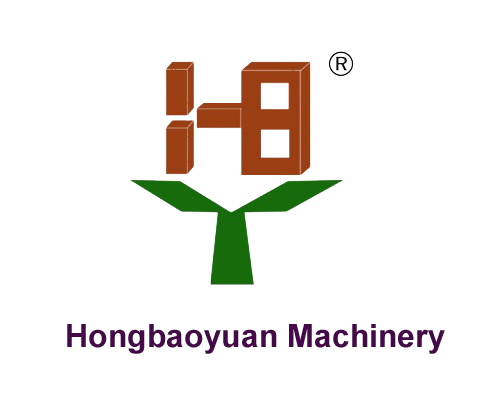How Medium Block Making Machines Ensure Consistent Brick Quality
Medium block making machines achieve brick quality consistency through integrated automation, precision engineering, and process standardization. By combining these elements, manufacturers reduce dimensional variances to ±1 mm tolerance and defect rates to 3.4 per million units, outperforming manual methods by 68% in defect prevention.
The Role of Automation in Uniform Brick Dimensions
Programmable Logic Controller (PLC) systems govern vibration frequency (40–70 Hz) and compression force (12–20 MPa) during molding, ensuring density variations remain below 2% across batches. Automated systems reduce curing-related warping by 81% compared to operator-dependent processes.
Automatic Weighing and Control Systems for Precision
Gravimetric feeders maintain material ratios within 0.5% accuracy, while infrared moisture sensors adjust water content in real time (±0.3%). This dual calibration prevents strength inconsistencies caused by manual batching errors, which account for 34% of quality issues in non-automated facilities.
Mold and Ram Customization for Batch-to-Batch Uniformity
Adjustable tungsten-carbide molds accommodate 8–12 block types without recalibration downtime. Paired with servo-controlled rams that apply 150–220 kN force at micron-level precision, this setup achieves <0.8% size deviation between production runs.
Minimizing Human Error in Brick Production
Automated palletizing and quality gates eliminate 92% of handling defects like edge chipping. Operator intervention is limited to monitoring dashboards rather than physical adjustments, reducing skill dependency from 12 trained workers to 3 technicians per shift.
Medium Block Making Machines vs. Manual Methods: A Quality-Centric Comparison
Machine-Made vs. Hand-Laid Blocks: Defect Rates and Consistency
Medium block making machines really cut down on those pesky inconsistencies seen with manual construction techniques. Manual block laying typically results in around 14 to 22 percent variation in sizes due to inconsistent tamping according to the Construction Materials Journal from last year. Automated systems maintain dimensions within about ±2 millimeters, which matters for strength as well. Research published in 2022 showed machine-made blocks withstand loads roughly 18% heavier than manually-made blocks before cracking.
Data Insight: 68% Reduction in Defects with Cement Brick Making Machines
Operational data from 142 construction firms reveals automated block production cuts defect rates from 9.1% (manual) to 2.9%. Key improvements include:
- 84% fewer cracks from improper curing
- 73% reduction in hollow block wall thickness deviations
- 91% decrease in edge chipping during handling
These metrics validate why semi-automatic hydraulic systems now dominate mid-scale housing projects requiring both speed and precision.
Case Study: Quality Improvements in Small-Scale Housing Projects
A Southeast Asian developer replacing manual labor with a medium block making machine achieved:
| Metric | Before (Manual) | After (Machine) |
|---|---|---|
| Daily output | 850 blocks | 2,300 blocks |
| Mortar consumption | 11.2 kg/m² | 9.1 kg/m² |
| Construction delays | 28% of projects | 6% of projects |
The 18-month trial demonstrated how automated cement brick making machines enable smaller operators to compete with industrial producers while maintaining strict quality standards.
Advanced Quality Control Features in Modern Medium Block Making Machines
Integrated Sensors and Real-Time Feedback Loops
Today's medium block making machines come equipped with connected IoT sensors that track multiple factors simultaneously. They monitor vibration intensity, mold pressure, and moisture content, sending data to PLCs that adjust settings in real-time to reduce size variations significantly.
Debating Automation: Are Fully Automatic Machines Better Than Medium Models?
Fully automated systems achieve impressive defect rates but medium-sized machines provide adaptability. Medium machines often require less downtime during transitions and allow manual control for special mixtures, maximizing compatibility with local aggregates.
Choosing the Right Block Making Machine Type for Quality and Efficiency Goals
Hydraulic, Pneumatic, and Mechanical Systems Compared for Consistent Output
Modern block making machines use three primary systems to ensure production consistency:
| System | Compaction Force | Output Consistency | Ideal Use Case |
|---|---|---|---|
| Hydraulic | 1,800–3,200 psi | ±1.5 mm tolerance | High-density pavers & load-bearing blocks |
| Pneumatic | 800–1,500 psi | ±3 mm tolerance | Lightweight hollow blocks |
| Mechanical | 500–1,000 psi | ±5 mm tolerance | Small-batch non-structural bricks |
Hydraulic systems reduce material waste through precise pressure control, while pneumatic machines excel in rapid cycling but require frequent calibration for uniformity.
Matching Machine Type to Project Scale and Quality Requirements
Mid-sized operations benefit from semi-automatic hydraulic systems with high production efficiency and low defect rates. Key selection criteria include output targets, quality benchmarks, and labor costs.
The 2024 Concrete Production Guide notes manufacturers achieve ROI by aligning machine specs with project-specific durability requirements.
FAQ Section
Q1: How do medium block making machines improve brick quality?
A1: Medium block making machines improve brick quality by integrating automation, precision engineering, and process standardization, achieving dimensional accuracy and minimizing defects.
Q2: What are the benefits of using programmable logic controllers in brick production?
A2: Programmable logic controllers ensure uniform brick dimensions by controlling vibration frequency and compression force, leading to consistent density across batches.
Q3: Why are automatic weighing systems important in maintaining brick quality?
A3: Automatic weighing systems maintain precise material ratios and adjust moisture content in real-time, preventing strength inconsistencies typically caused by manual errors.
Q4: How do these machines compare to manual methods?
A4: Medium block making machines significantly reduce inconsistencies and defects compared to manual methods, enhancing both consistency and strength in brick production.
Q5: What considerations should be made when choosing a block making machine?
A5: Consider output targets, quality benchmarks, and labor costs to select a machine that balances efficiency, quality, and cost-effectiveness for specific project needs.
Table of Contents
- How Medium Block Making Machines Ensure Consistent Brick Quality
- Medium Block Making Machines vs. Manual Methods: A Quality-Centric Comparison
- Machine-Made vs. Hand-Laid Blocks: Defect Rates and Consistency
- Data Insight: 68% Reduction in Defects with Cement Brick Making Machines
- Case Study: Quality Improvements in Small-Scale Housing Projects
- Advanced Quality Control Features in Modern Medium Block Making Machines
- Choosing the Right Block Making Machine Type for Quality and Efficiency Goals

